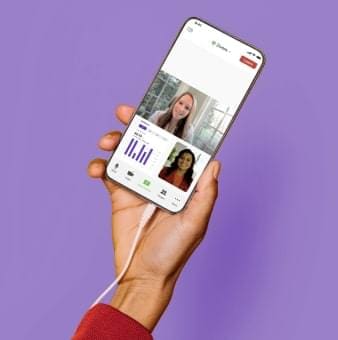Helping employees cope with burnout

Our Experts Wellbeing Workplace Engagement
Strategies and steps for leaders to help their employees through the burnout crisis from eMindful, a Wondr Health Company.
Read insights about helping employees overcome burnout from our eMindful team, a Wondr Health Company that provides evidence-based mindfulness programs for everyday life and chronic conditions—promoting health, happiness, and performance.
Burnout is a mental health syndrome recognized by the World Health Organization as resulting from chronic workplace stress that has not been successfully managed. Surveys from Deloitte and Mental Health America show that three-quarters of employees in the U.S. have experienced burnout at their jobs. The impact of burnout to an organization is costly, and not just in terms of the dollar amount cost in healthcare spending (up to $190B/year). Burnout causes lower productivity and quality of work as well as turnover, putting the retention of top talent at risk. To help employees lead through burnout, businesses should focus on creating a culture of psychological safety within the organization.
Take the Temperature of the Population
Cultivating awareness is of utmost importance in mitigating the risk of burnout before it becomes an epidemic. Burnout is characterized by feelings of energy depletion or exhaustion, increased mental distance from one’s job, or feelings of negativity and cynicism toward one’s job, and reduced professional efficacy. Organizations can seek to understand their population’s well-being by gathering data and soliciting feedback to identify the presence of burnout symptoms, and implement plans for intervention.
To better understand how employees measure their mental health and well-being, eMindful asked workers across numerous industries how they measure how well their mental health is from day to day. Responses from thousands of employees show that nearly 75% of workers predominantly gauge mental wellness through their mood and quality of sleep.
It’s important that leaders feel comfortable asking questions to take the pulse of their teams, actively listen to identify risk factors such as poor sleep, and advocate for them and provide relevant resources as needed.
Set Boundaries for Work Hours
Companies should recognize the role that an ‘always-on’ culture plays in contributing to burnout by causing work-life imbalance and presenteeism. Workplace stress is created when there’s an implied expectation that workers should always be responsive and available, particularly in the remote work environment.
Firm boundaries can be established as to when work gets done, and when it’s time to unplug. Organizations can normalize not sending communications outside of business hours, and encourage their population to turn off notifications after hours or while on breaks. Companies also can consider establishing policies to reduce the amount of meetings throughout the day, or adopt a strategy of non-meeting hour times to reduce interruptions.
Promote Togetherness in Communication
When faced with an excessive workload and stress, it’s easy for employees to lose sight of the shared purpose behind the task at hand and feel a disconnect from the organization. Employees should be aware of the meaning behind their objectives, how they are related to the company vision and why what they are doing matters to the business. Leaders can also be a source of support by acknowledging achievements and celebrating accomplishments.
Burnout can be addressed as a group when leaders send the message to their teams that mental health concerns are part of the collective human experience. As a best practice, leaders can open lines of communication by discussing their own experiences and strategies for dealing with stress candidly. Approaching the subject of workplace stress with empathy, humanity, and compassion goes a long way in ensuring employees feel heard and validated.
Make Self-Care a Priority
The American Psychiatric Association’s Center for Workplace Mental Health recommends creating opportunities for employees to take part in mindfulness training and practice to improve the employee experience and well-being within the organizational culture. Mindfulness practices allow us to cultivate self-awareness as to what energizes us, and what depletes us. Making this connection helps employees recognize when they need to take time to recharge. It’s also useful when leaders are able to recognize when they are exhibiting stress, so they are better able to manage it before modelling it to others.
As the saying goes, “you can’t pour from an empty cup.” Leaders can set an example for their population by modelling the behavior of prioritizing downtime to take care of their own wellness, and setting self-care goals for their teams to hold one another accountable.
Learn more about strategies to lead through and overcome employee burnout in eMindful’s “Leading Through Burnout” collection.





